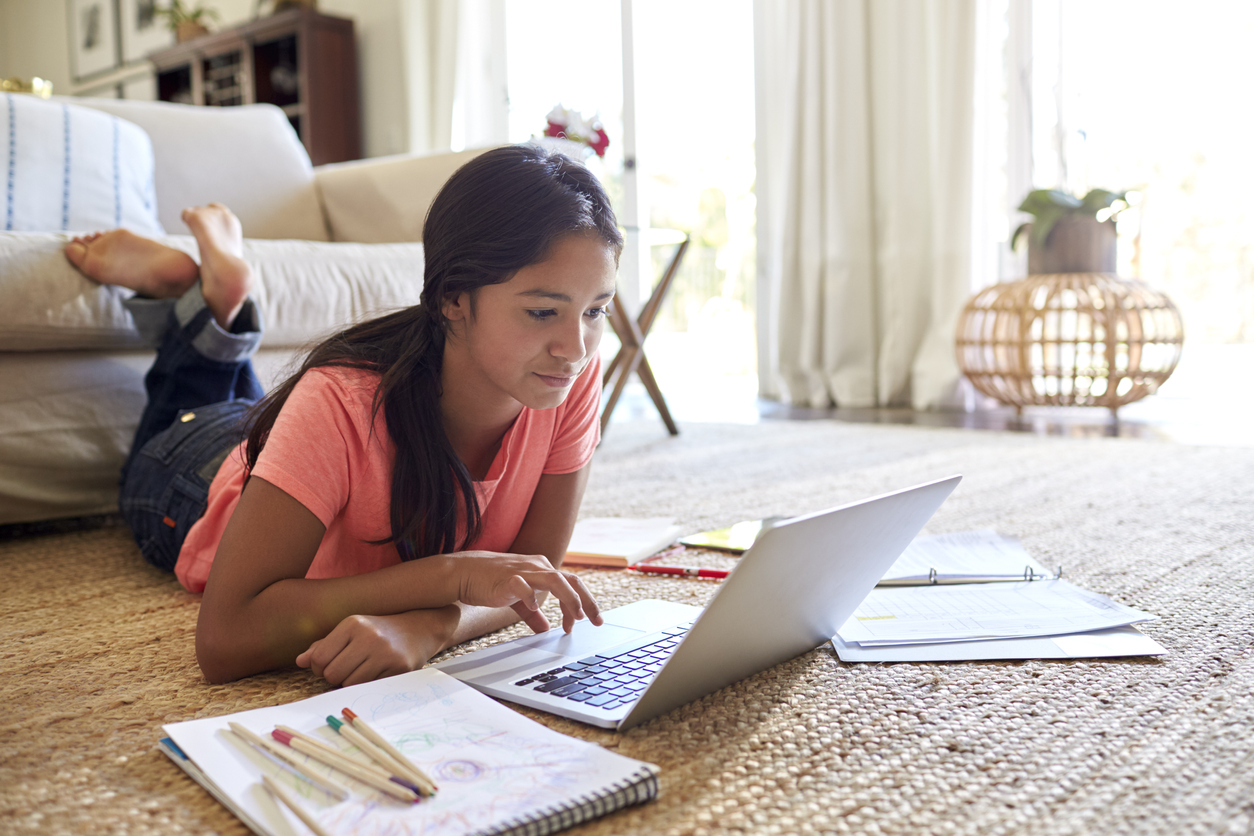Somewhere between February and April, everyone’s lifestyles changed drastically. COVID-19 has sent everybody home for the foreseeable in order to control the spread of the virus. On one hand, we have never been better-equipped for this kind of pandemic. Mobile devices and wifi, communication and learning platforms, cloud-shared documents, and video streaming: we’re great at staying home. But as your children adapt to finishing the 2019/2020 school year online, it’s also important to acknowledge how much anxiety this is all creating. This whole pandemic crisis is a scary experience for all of us. It’s just that adults are better at ignoring what we can’t change and focusing on the day-to-day. It may be hard to see between all the home-frolicking and homework checking, but your kids may be experiencing a crisis and student anxiety.
COVID-19 Crisis Anxiety in Today’s Students
Children imprint on the crisis. It’s a survival trait that motivates us. Remember how the last housing crisis shaped the values of millennials? Children are supposed to ask themselves deep questions, like where they’ll be in 20 years and what the world will be like. The way Coronavirus has changed the world around them so quickly paints a worrying picture. Children also pick up anxiety from parents, who have very real reasons to be concerned during this crisis.
And like all of us, your children are also trying to continue their lives. They want to finish this year of school, and to move up or graduate on time. They, too, are trying to put aside their virus fears, but signs of stress can show through. As parents, it’s important to know what is happening and what you can do.
Crisis Anxiety and Displays of Negative Emotion
Children experiencing student anxiety often don’t really understand what they’re feeling, and the worry will come out in other ways. They may be more negative during schoolwork or suddenly shout that everything is stupid. They may seem sullen, refusing to work or play, or only focus on one activity that makes them feel better.
In their schoolwork, they may struggle more with learning or remaining focused on a difficult task. They may move around restlessly instead of staying seated at work.
Be Patient and Help Them Talk About Their Student Anxiety
When you’re trying to guide your kids through education or simultaneously work from home, these negative behaviors can be frustrating. But your child isn’t being difficult on purpose, they’re having a hard time expressing themselves.
So be patient and compassionate about moods and attitudes during this time. If you can, sit down with your child and talk out the feelings. Try to give them the right feeling-words for their current emotions and talk about the things that are worrying them most. Being able to express anxiety about the crisis can help direct the negative displays away from other contexts.
Family Physical Activity
One of the biggest risks of stay-at-home is staying too still. Kids don’t actually work at desks for 8-hours straight. They get up, change classes, go to lunch, and have recess and PE. That physical movement is good for them. It keeps the blood pumping and the brain focused. And it’s good for you, too. Exercise can help to relieve stress and remembering to exercise can prevent the negative static from bottling anxiety up inside.
Maintain a Routine
The other thing you can really do to help is to maintain a regular routine. Only spend a few days lounging in jammies before getting back to work and school – together as a family. Re-establish your bedtimes and breakfast times. Then set a schedule for school with plenty of breaks and stretching. This kind of routine, and a structure to get back into learning, can help your child both distract themselves from worry and learn to master their anxiety.
Learn More About Student Anxiety
Here at the Tenney School, we know you and your kids are working hard to rebuild normal in the new stay-at-home situation. This global crisis is something we can all pull through together with teamwork, compassion, and online resources. Contact us today for more insights into at-home schooling during the coronavirus pandemic.


